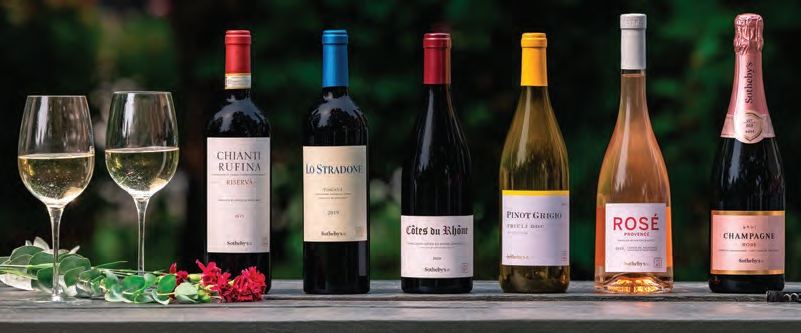The pandemic caused wine collectors to take stock of their holdings. Sotheby’s Wine—the only major global auctioneer offering fine wines at retail—maintains stores in New York and Hong Kong, as well as an online business. “Other retailers may have 6,000 to 15,000 different wines and spirits, whereas we have under 2,000, each of which is very carefully selected,” says Jamie Ritchie, one of the world’s leading wine auctioneers and the head of Sotheby’s global wine business. In October 2019, they launched the Sotheby’s Own Label Collection, “which has been incredibly popular, with the original range of wines exceeding 30% of retail sales in the first six months,” he says.
Below, Ritchie talks wine with us.
In the nearly 30 years since launching Sotheby’s New York wine auctions, what are the biggest developments?
The market outlook for both wine and spirits is extremely positive, with increased global demand for the highest quality. The following three factors are the most noteworthy:
1–Regulation is responsible for the price of wine today. Firstly, in 1994, when New York relaxed its regulations permitting wine to be resold at auctions, it ignited the secondary market, as it enabled wine lovers to start building collections; and there was a huge transfer of wine from.Europe to the U.S.—as the U.S. wine buyer was the least price sensitive from 1994 through 2008. Secondly, in 2008 when Hong Kong reduced its tax rate to 0%, it enabled auction houses and fine-wine merchants to ship wines to Hong Kong for auction with no additional taxation. Since 2009, Asian wine buyers have been the least price sensitive, and this is the No. 1 wine market.
2–The wine-and-spirits market has become truly global. As wealth has been created by ever-younger generations in all types of industries, such as tech and real estate, there has been a broader diversification of clients that were traditionally from the world of finance and, before that, doctors and lawyers. Thirty years ago, the average age of a wine buyer was 65. Now 75% of our new buyers are under 50, and 43% are under 40.
3–The evolution in demand and prices for bordeaux, burgundy, and whiskey—10 years ago one would never have thought that the percentage of bordeaux, burgundy, and spirits would shift so dramatically, with the growth in prices and demand for burgundy and spirits outstripping bordeaux.
What are some of the most common mistakes people make when beginning to collect?
Buying the wrong wines, producers, and vintages, as well as too much of specific types of wines or vintages. You don’t want to buy all young wines, as you have nothing to drink while they are maturing. Advice is needed, but it is important to find someone you can trust, then verify with third parties that they can be trusted.
What do you tell new collectors re: storage, conditions, etc.?
Store wines lying down at 55 degrees Fahrenheit, 60% to 80% humidity, in the dark, vibration-and odor-free. Wine needs these conditions for long-term storage. If you cannot provide them at home, then use a professional wine-storage business—there are many.
In comparison to wine, whiskey and spirits are relatively easy, as they are more robust and tend not to spoil when the bottle is sealed. Store bottles upright (so the alcohol doesn’t degrade the cork) and avoid direct sunlight and temperature extremes (use 60-70 degrees Fahrenheit).
What do you have your eye on with respect to collecting?
Bordeaux is undervalued, as prices have been relatively stable and inexpensive compared with Burgundy and California. For example, 2005 is a truly great vintage, but still at very fair prices—I expect them to increase as they get toward their 20th anniversary and more great bottles are opened. I expect burgundy prices to remain high and, since production is so limited, you have to buy it when the vintage first comes onto the market. Champagne, Italy, Rhône, and Spain will continue to attract greater demand, as prices in other regions have increased, so they all look like good value. And ever-increasing diversity in wines will continue to be appreciated, with indigenous grape varieties becoming more valued. American Whiskeys will also see increased global demand.
For the reds, the best Pinot Noirs (from any region) will be in strongest demand worldwide, for their essential nuance and finesse. Syrah (worldwide) and Nebbiolo from Piedmont, as well as Sangiovese from Tuscany will continue to attract more attention.
For the whites, Riesling is becoming more popular from all countries, but especially Germany and Austria.
The interview has been edited for clarity and space.
This article originally appeared at https://www.sothebysrealty.com/eng/qa-wine-collecting-with-jamie-ritchie-of-sothebys-wine




 Facebook
Facebook
 X
X
 Pinterest
Pinterest
 Copy Link
Copy Link



